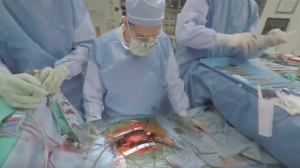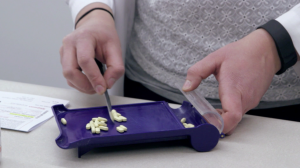NEW YORK – Among women about to undergo a cesarean delivery, the addition of a povidone-iodine scrub before entering the OR to a standard povidone-iodine paint application in the OR reduces the rate of subsequent infections, according to a team at the University of Pennsylvania, Philadelphia.
Dr. Samantha Weed and colleagues note in the May issue of Obstetrics & Gynecology that there is anecdotal evidence, but no formal data, indicating that using two forms of the same antiseptic agent reduces postop infections compared with a single agent.
To investigate, the authors compared postcesarean infectious complications in the year after the introduction an antiseptic surgical site protocol at their institution of a 15% povidone-iodine scrub followed by a 10% povidone-iodine paint application, and in the year before when the standard preparation was a single 10% povidone-iodine paint solution.
The analysis included 1139 women who had the single paint preparation and 1004 who had the scrub-plus-paint process.
The rate of major puerperal infections was 5.4 per 100 cesarean deliveries in the earlier period compared with 3.4 per 100 under the new protocol, the team found. The corresponding rates of composite wound infection were 7.8 vs 5.5 per 100 cesarean deliveries.
After adjusting for confounders, the investigators calculate that the incident rate ratios were 0.62 for major puerperal infections and 0.69 for composite would infections.
“As the nationwide cesarean delivery rate continues to rise, identifying methods through which postcesarean delivery infectious complication rates can be reduced is critical,” Dr. Weed and colleagues point out.
“Given our findings,” they conclude, “we recommend implementation of a preoperative skin-preparation technique involving a 3-minute povidone-iodine (13% solution) scrub followed by a povidone-iodine (10% solution) paint over preparation with povidone-iodine (10% solution) paint alone.”
Reference:
Comparing Postcesarean Infectious Complication Rates Using Two Different Skin Preparations
Obstet Gynecol 2011;117:1123–1129.




